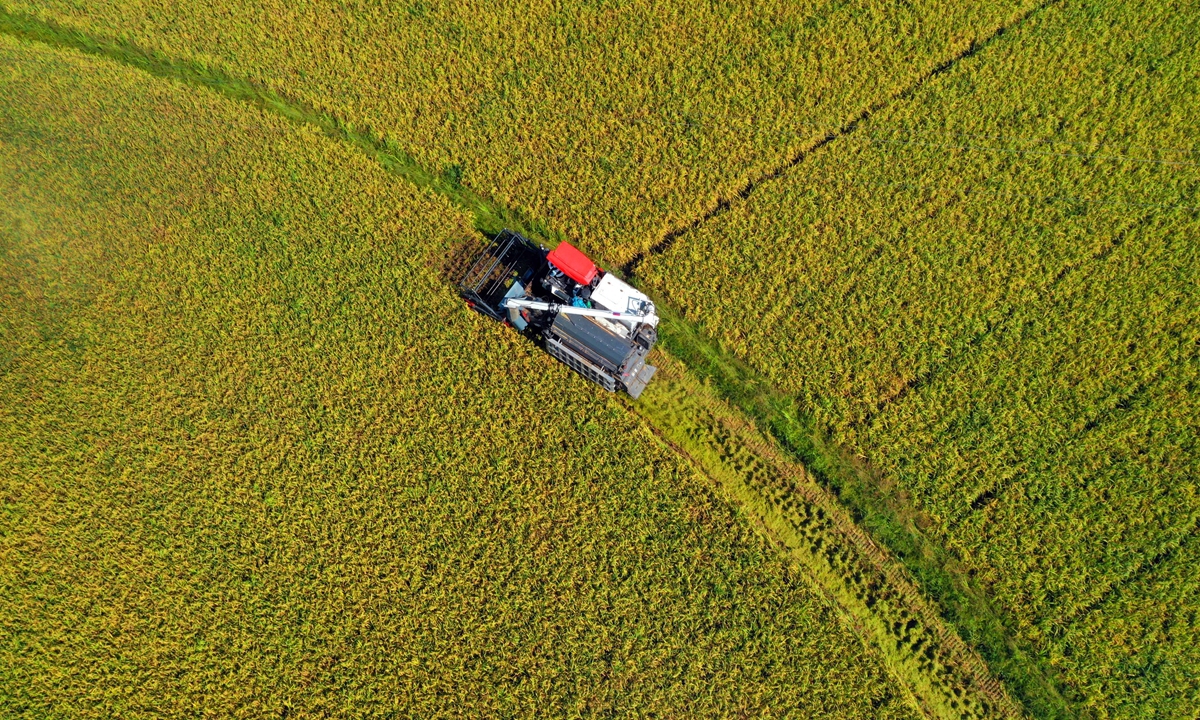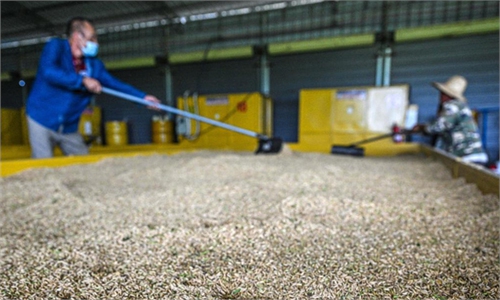
Farmers harvest early rice in Yongfeng, East China's Jiangxi Province on Tuesday. In the heat of the summer rush, farmers are busy harvesting 420,000 mu (28,000 hectares) of mature early rice to ensure that these summer grains are put into silos. China has set a grain harvest goal of 650 million metric tons and has achieved the target for six years in a row. Photo: VCG
The Chinese Ministry of Agriculture and Rural Affairs held a meeting to review the achievements linked to supportive government policies targeting the seed industry while calling for localities to ramp up support for industry players.
The seed industry has been listed a priority to secure the nation's food safety, and are often described as the 'chips' of agriculture. While the self-sufficiency rate of China's wheat and rice improves, seeds for the two staple grains have now reached 100 percent in self-sufficiency. However, risks remain for soybean and corn seeds which both heavily rely on imports, according to media reports.
Zhang Xingwang, deputy minister of the Ministry of Agriculture and Rural Affairs, said that the ministry has reviewed achievements connected to resource allocation and research and development (R&D) in the seed industry, supported by the government.
Through promoting the cooperation between industry players and other third-party organizations such as research institutes, financial companies and the seed industry base, market competitiveness, R&D capabilities and supply capacity have been strengthened, marking an important start for industry revitalization, the ministry said.
Seed companies must stay in sync with the national strategy for seed industry development and promote entrepreneurship, according to a summary of the meeting, calling on companies to play their part in injecting impetus in the construction of the nation's agricultural strength.
Localities must work to ensure progress in supporting the development of industry players, especially elite companies by helping relieve bottlenecks and create a better market environment for overall industry development, officials said.
The ministry launched support for industry players between 2021-22 in which 270 out of 30,000 companies were chosen for targeted government assistance.
The Chinese seed industry is still working to close the gap with developed agricultural economies, to improve China's current inadequate R&D capability, incomplete supply chain, and lack of research talent working in seed companies, Lu Fuxing, an expert from the China Rural Revitalization Research Institute of Hunan Normal University, told local media.
As a major agricultural country, China's seeds market ranks 19th in the world, with the scientific innovation and intellectual property listed as the two areas still falling short of expectations, experts said.

